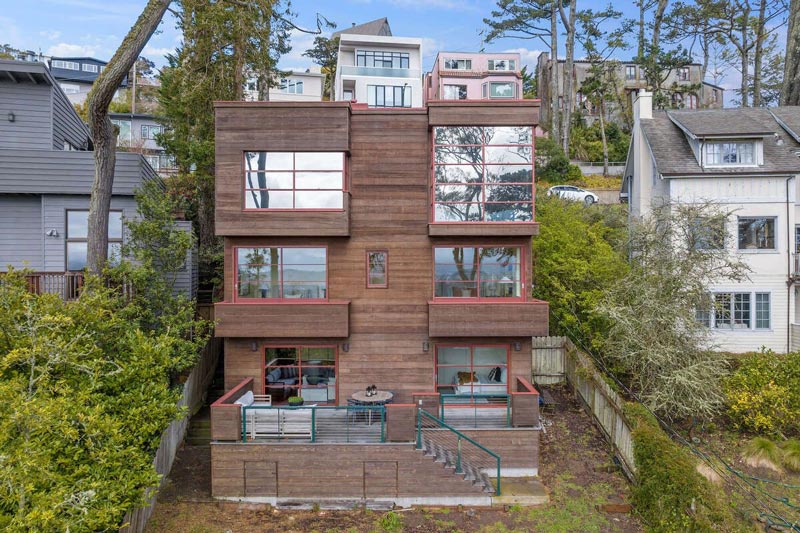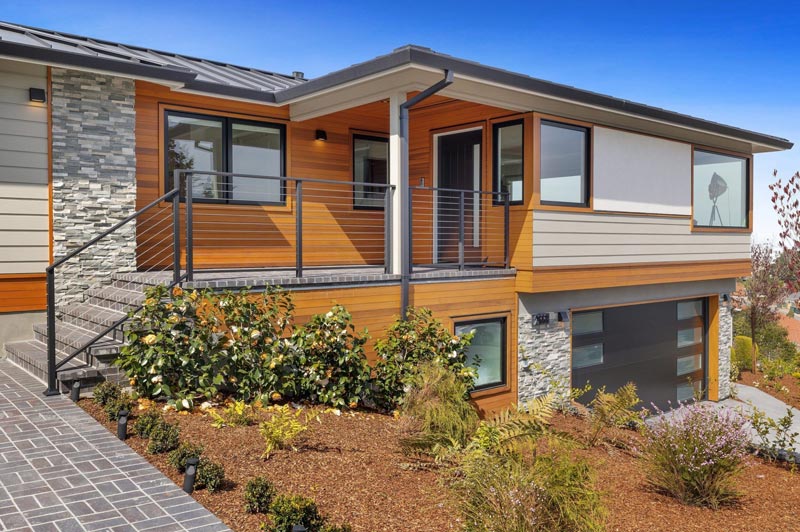In the realm of architecture, the exterior of a home serves as its primary protective shell and aesthetic facade. One crucial component that architects, builders, and homeowners ponder over is siding, a versatile, functional material that not only safeguards a structure but also bestows it with a unique visual appeal. With technological advances, the field of siding has evolved, giving way to materials that surpass their traditional counterparts, both in durability and visual elegance. This article will explore the panorama of siding technologies, underlining the importance of siding in a home, and spotlighting the emergent trends that are redefining the future of home exteriors.
Home siding serves two primary functions. It offers a sturdy barrier against external elements, protecting the structural integrity of the building. At the same time, it provides an aesthetic dimension, influencing the property’s curb appeal. As such, the choice of siding can make a significant impact on a home’s value and longevity.
Traditional Siding Materials and Their Limitations
Wood Siding
A stalwart in the siding industry, wood is lauded for its timeless beauty and natural warmth. However, it’s not without its drawbacks. Wood siding demands consistent upkeep to ward off rot, pests, and weather-related damage. Besides, its vulnerability to fire adds a layer of risk to this otherwise attractive option.
Vinyl Siding
An affordable and low-maintenance alternative to wood is vinyl. However, despite being weather-resistant and available in an array of colors, vinyl siding tends to warp and crack over time. Its lack of insulation is another shortfall, negatively affecting the energy efficiency of homes.
Fiber Cement Siding
Fiber cement, a mix of wood fibers, cement, clay, and sand, is renowned for its robustness and fire resistance. Nevertheless, its heavy weight poses installation challenges, requiring professional help, which can elevate costs. Additionally, while it emulates the look of wood, it lacks the tactile warmth that many homeowners cherish.
Limitations of Traditional Materials
In the quest for optimal siding, these traditional materials reveal noticeable limitations. They often entail a trade-off between aesthetics, durability, energy efficiency, and maintenance needs. The advent of newer materials aims to address these issues, offering improved solutions for the evolving requirements of modern homeowners.
The Need for Innovation
With growing awareness of environmental sustainability and energy efficiency, the need for innovative siding solutions is pressing. It’s no longer just about achieving a balance between form and function. The future demands materials that reduce energy consumption, minimize maintenance, and offer a superior aesthetic appeal. The journey from traditional to innovative siding technologies embodies this shift, promising an exciting future for home exteriors.
The Rise of New Siding Technologies
The construction sector is witnessing an exciting phase of rapid advancements. This progress is evident in the domain of siding technologies, where cutting-edge solutions are transforming the traditional landscape. New siding technologies, emerging from a confluence of factors, are leading this change.
Energy efficiency, sustainability, and aesthetics are the driving forces behind this revolution. An increasing number of homeowners are looking for siding options that can reduce energy consumption, withstand harsh environmental conditions, and enhance curb appeal. Modern siding technologies are thus evolving to meet these demands.
One standout innovation is high-performance composite siding. Composite siding consists of a range of materials, each lending a specific trait. This blending creates a high-performing product that offers durability, low maintenance, and aesthetic versatility. A remarkable fact about composite siding is its eco-friendly nature. Many versions use recycled materials, minimizing waste and reducing environmental impact.
Composite siding is proving to be a game-changer. It’s impressively robust, resisting damage from weather and pests. Its low-maintenance nature is another big plus, offering a worry-free solution for homeowners. An interesting design aspect is its versatility. Composite siding can mimic the look of natural materials like wood, catering to diverse aesthetic preferences.
Another exciting development is the advent of smart siding technologies. These products reflect the ongoing integration of the Internet of Things (IoT) in construction. Smart siding can provide real-time information about the home exterior’s condition, notify homeowners about necessary repairs, and even self-regulate to enhance energy efficiency.
A key feature of smart siding technologies is their customizability. Homeowners can adjust the properties of the siding, like color and texture, at the touch of a button. Imagine changing the exterior color of your house to match the seasonal hues, all while sitting comfortably on your couch.
These new siding technologies are rewriting the rules of the game. They offer improved performance, convenience, and aesthetic possibilities that traditional materials can’t match. However, they’re not just about better products. They also signal a shift in mindset, as homeowners and builders are increasingly recognizing the importance of sustainability and smart living.
Interestingly, these innovations aren’t standalone. They’re part of a broader trend that’s transforming construction. As we continue to explore and develop new materials, methods, and technologies, the field of siding will undoubtedly experience further advancements.
In summary, the rise of new siding technologies reflects a remarkable journey of progress. From basic protective coverings, we’re now seeing high-performance, aesthetically pleasing, and smart solutions. This evolution highlights how science, technology, and shifting consumer demands are shaping the future of home exteriors. The implications are wide-ranging, touching upon aspects like sustainability, energy efficiency, convenience, and the overall experience of living in a home. As we look ahead, it’s clear that innovative siding technologies will continue to play a pivotal role in the future of construction.
Case Studies of Innovative Siding Applications
Case Study 1: Burlingame Residence
Shifting our attention to Burlingame, we find a splendid example of premium residential siding, combining aesthetic appeal and practical functionality. The Burlingame Residence, expertly managed by the True Build Group, stands as a testament to superior craftsmanship.
This residence notably features 1×4 Nickel Gap Clear Heart Cedar Siding. This selection imbues the property with a rustic allure and a distinct visual style, while ensuring the durable properties cedar wood is known for. The modern touch of the Nickel Gap design is an attractive addition, with each slat meticulously aligned to create a sleek, appealing facade.
Furthermore, the Burlingame Residence also highlights Boral TruExterior 1×10 Square Channel Siding. This innovative material, composed of a blend of polymers and fly ash, emulates the aesthetic of real wood while providing superior resilience against moisture, temperature fluctuations, and insect activity.
The Boral TruExterior Channel Siding accentuates the architectural grandeur of the Burlingame Residence, bolstering the property’s chic, contemporary appeal. The manufacturer’s comprehensive product information, accessible at truexterior.com, provides further insight into its unique advantages.
True Build Group, the implementer of these advanced siding options, demonstrated exceptional expertise and experience on this project. With the Burlingame Residence, they reaffirmed their commitment to delivering superior quality, durability, and aesthetic charm in their residential siding projects.
Case Study 2: Sustainable Composite Siding in Modern Homes
Let’s look at a fascinating example from Portland, Oregon. The city, renowned for its green initiatives, is home to a modern housing project, “EcoHaven”. Utilizing composite siding, EcoHaven showcases sustainable construction at its best. The high-performance composite siding used is both durable and low maintenance, meeting the criteria for the city’s stringent green building standards.
What’s remarkable about EcoHaven is its extensive use of recycled materials. The composite siding here is made from 60% recycled wood fiber and 40% recycled plastics. Despite using recycled materials, it effectively mimics the charm of traditional wood siding, rendering a warm, inviting aesthetic. By selecting this material, EcoHaven proves that environmentally friendly choices don’t have to compromise on quality or aesthetics.
Case Study 3: Smart Siding in Energy-Efficient Buildings
Shifting our focus to tech-savvy applications, we find the “Innovare House” in San Francisco, California. Innovare House takes a leap into the future with smart siding technologies, seamlessly integrating IoT into the fabric of the building.
Innovare House features smart siding with embedded sensors that provide real-time information about the home exterior’s condition. A unique feature of this smart siding is its self-regulation capability. When sensors detect high external temperatures, the siding adjusts its reflective properties, reducing the heat intake and thereby optimizing the building’s energy efficiency.
Another intriguing feature is the siding’s customizability. Homeowners can alter the siding’s color and texture using a smartphone app, matching the exterior to their mood or the season. This level of control and customization is an exciting glimpse into the potential of smart technologies in home exteriors.
Both Burlingame Residence, EcoHaven and Innovare House represent the successful application of innovative siding technologies. Each one, in its unique way, demonstrates how advanced materials and smart technologies are shaping the future of home exteriors. The impact goes beyond functionality and aesthetics, extending into realms of sustainability, energy efficiency, and interactivity. These case studies underline the transformative potential of innovative siding technologies in real-world scenarios. They are a testament to the exciting changes that are already in motion in the field of home exteriors.
Future Trends in Siding Technologies
As we look ahead, the siding industry is set to witness a slew of innovative trends. One promising development is the use of nano-engineered materials. Such materials, enhanced at the molecular level, exhibit superior characteristics such as resistance to heat, water, and UV radiation. This could significantly prolong the siding lifespan, reducing maintenance costs and enhancing building resilience.
Moreover, the advancement of IoT and smart technology integration will continue to shape the industry. We can anticipate siding materials that don’t just self-regulate, but also self-repair, thanks to the convergence of smart materials and IoT. This is not just about detecting damage; imagine siding that can mend itself.
Green construction is another trend expected to proliferate in the coming years. The rise in eco-consciousness among homeowners will lead to increased use of recycled and biodegradable materials in siding. Not only will these materials reduce environmental impact, but they will also provide additional benefits such as improved insulation and lower energy consumption.
Additionally, the interplay of aesthetics and technology will become even more critical. Siding will not just protect and insulate; it will contribute to the visual identity of the home in novel ways. Expect more options in terms of colors, textures, and finishes that can be customized at the touch of a button.
VI. Conclusion: The Transformative Potential of Innovative Siding Technologies
In conclusion, innovative siding technologies are a vital part of our evolving construction landscape. They hold the potential to transform home exteriors, introducing superior performance, novel aesthetics, and improved sustainability. As we continue to navigate towards the future, these innovative materials and technologies will indubitably shape the homes we live in, providing a fascinating intersection of form, function, and forward-thinking design. From self-repairing materials to eco-conscious options, the future of siding is an exciting space to watch.



0 Comments